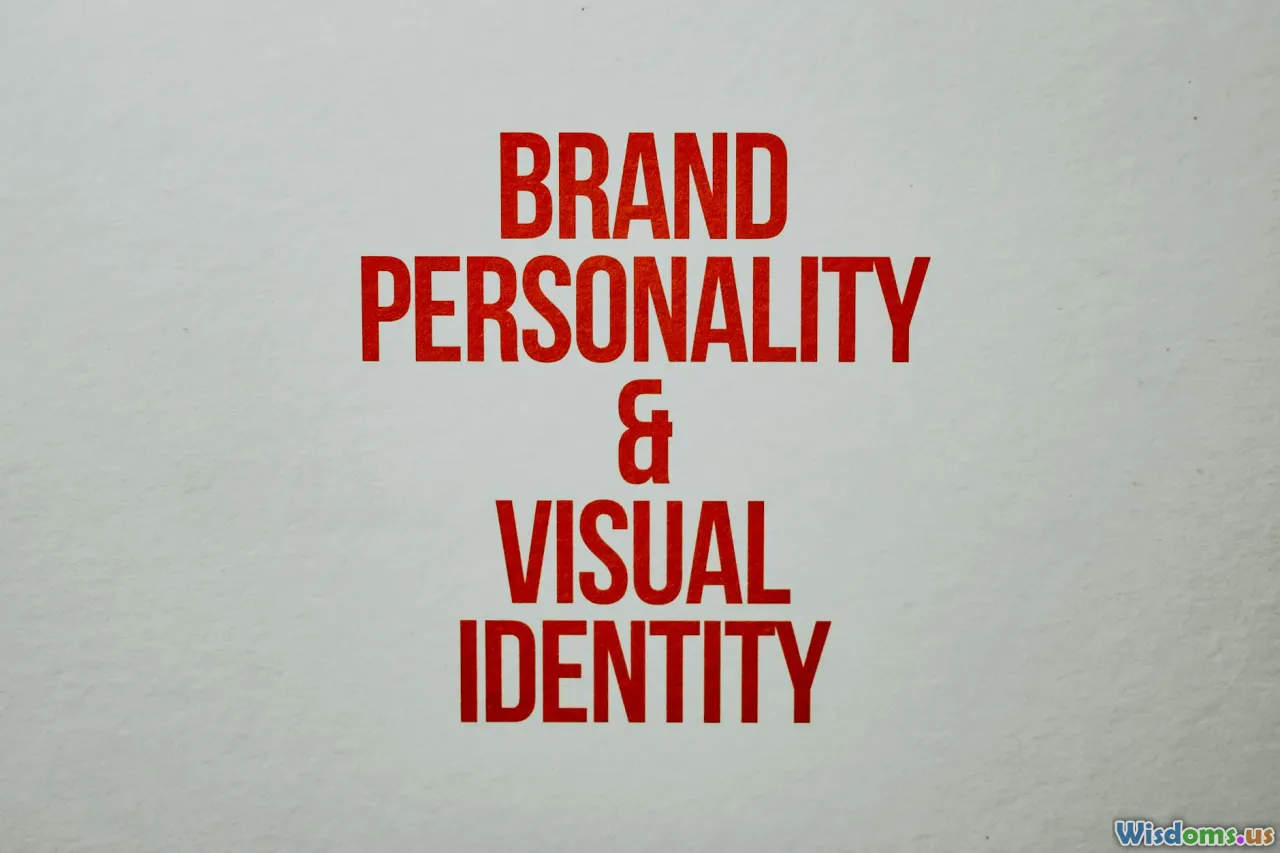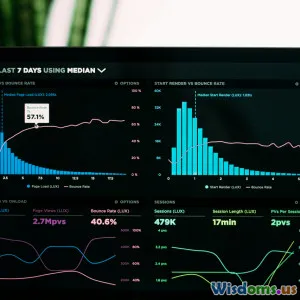
Infographics In 2024 Trends Redefining Visual Communication
15 min read Explore 2024 infographic trends revolutionizing visual communication, boosting engagement and storytelling through immersive, data-driven designs, interactivity, and AI-powered visuals. (0 Reviews)
Infographics in 2024: Trends Redefining Visual Communication
In today's fast-paced digital era, the gulf between content overload and user attention span is growing wider. Brands, educators, and news outlets are all searching for smarter ways to connect with their audiences. In this visual battleground, infographics have transcended from catchy social media eye candy into core tools redefining how information is shared, understood, and remembered. As 2024 unfolds, a new wave of trends is revolutionizing infographic design, interaction, and impact—and the shift is more than skin deep.
Heightened Interactivity: Hover, Click, and Explore

Passive consumption is waning as users demand richer ways to engage with content. In 2024, infographics aren't just static images—they're functional data explorers. Modern interactive infographics invite users to hover over, click on, or even filter specific sections for deeper insight.
For instance, a climate report infographic might let users click on years or regions, instantly updating corresponding charts and facts. Educational publishing platforms have integrated embeddable infographics where students can manipulate parameters or watch animated progressions (like energy consumption or population shifts).
How to Leverage Interactive Infographics:
- Identify stories or datasets with multiple layers of information.
- Use tools like Flourish, Tableau Public, or Canva's interactive features, which allow for clickable hotspots and animation triggers.
- Test for accessibility: ensure interactive elements are keyboard-navigable and mobile-friendly.
Real-World Example: The New York Times’ live election result infographics allow readers to hover for specifics on counties or offices, lending immense credibility through transparency and user control.
AI-Enhanced Data Visualizations

Artificial intelligence is revolutionizing infographic creation and personalization. In 2024, tools backed by AI algorithms do more than automate data charting: they uncover patterns, suggest optimal visualization types, and even adapt infographics according to audience preferences.
Breakthroughs in Practice:
- Automated Insights: Platforms like Tableau and Google Data Studio now leverage AI to point out anomalies, trends, or irregularities in raw data automatically.
- Personalized Infographics: Some marketing tools generate personalized infographics for newsletters, where individual user data or habits determine the displayed stats.
- Content Localization: AI-driven translation and cultural adaptation ensure infographics resonate globally, adjusting colors, symbology, and even humor styles for different regions.
Concrete Example: Spotify Wrapped's yearly summaries present ultra-personalized infographics, using AI to organize each user’s musical habits—a campaign that's both viral and deeply engaging.
The Rise of Animated Graphics and Micro-Animations

Animated infographics bridge the gap between video and static illustration. In 2024, widespread browser and social platform support for formats like Lottie, SVG animation, and WebP means rich animated graphics load quickly—even on mobile. Micro-animations—subtle motion cues that appear as the user scrolls or interacts—can guide attention and create a sense of delight without distracting.
Best Practices:
- Use animation to emphasize change over time or flow (e.g., migration trends or shifting market shares).
- Avoid excessive flair. Animations should clarify, not clutter. Data labels, transitions, or highlight moves often benefit from subtle entrance or hover effects.
- Prepare assets in scalable formats to ensure crisp visuals from billboards to smartwatches.
How-to Tip: Tools like Figma and Adobe After Effects now support seamless export of animation assets suitable for web embedding, letting designers ship micro-animated infographics efficiently.
Mobile-First Infographic Design

With over 60% of internet traffic coming from mobile devices in 2024, the old desktop-oriented infographic is obsolete. Today, infographics need to feel intuitive, readable, and aesthetically crisp on screens as small as a wristwatch.
Approaches for Success:
- Vertical Flow: Design tall, scrollable infographics that can be easily navigated with a thumb.
- Simplified Text: Reduce text blocks. Use iconography and data-centric illustrations in place of lengthy labels or explanations.
- Quick Navigation: Anchor clickable summaries or TOCs at the top—ideal for long-form infographics.
- Chunk Information: Divide content into digestible panels or cards.
Industry Example: Instagram Stories and LinkedIn’s carousel formats now favor single-concept, mobile-optimized infographics—enabling professional creators to distill deep reports into swipeable, shareable content.
Inclusive and Accessible Visual Design

Visual communication should connect—not exclude. One of 2024’s dominant trends is robust attention to inclusivity and accessibility, ensuring that everyone, regardless of ability, can extract value from infographics.
Checklist for Inclusive Infographics:
- Color Contrast: Rely on stringent WCAG contrast ratios. Use textures and labels, not just colors, to differentiate elements (essential for color-blind audiences).
- Alt Descriptions: Thorough alternative text and ARIA labels enable screen readers to deliver full infographic value.
- Font Choices: Opt for legible, scalable fonts. Avoid cramming text or using novelty scripts that diminish readability.
- Testing: Use simulators and real-world feedback from users with disabilities to iterate designs.
Case Study: Government agencies are adopting strict accessibility guidelines for all public-facing infographics, which has mainstreamed the use of color-blind friendly palettes and alt tags even in industry.
Data Storytelling: From Static Charts to Narrative Experiences

In 2024, infographics aren't just about depicting what happened—they're about why it matters. Audiences crave narrative: a journey guided by insights, context, and emotional connection.
Techniques for Compelling Data Storytelling:
- Sequential Flow: Structure infographics to unfold information step by step, like turning pages in a story or moving down a storyboard.
- Emotional Anchors: Use human-centric data points—personal stories, interviews, or real-life consequences—to ground abstract numbers in reality.
- Comparisons and Contrasts: Before-after visuals, change-over-time progressions, or scenario comparisons (e.g., sustainable practices today vs. in 2050) enhance understanding.
Example: The "Carbon Majors" infographic sequence from The Guardian layers historical emissions data with personal stories and case studies, steering policy debate through compelling narrative design.
Data Ethics and Visual Truthfulness

As public awareness about misinformation grows, 2024’s infographics have come under scrutiny not just for what they show, but how they show it. Misleading axis scales, cherry-picked data, or hidden sponsorship can erode credibility fast.
Integrity-Driven Practices:
- Transparent Sourcing: Link directly to original data. Where possible, make datasets downloadable via the infographic interface.
- Explicit Annotations: Mark estimated figures, data limitations, and methodological choices succinctly but clearly.
- Bias Safeguards: Peer review and stakeholder consultation help mitigate unconscious visual manipulation.
Pro Tip: Always clarify numerical sources, context, and necessary caveats within the infographic, rather than burying it in small print or trusting external documents.
Case Study: Nonprofits like Gapminder are setting new standards, providing transparent data links for every visual claim—building user trust that translates into societal impact.
Integration With Immersive and Hybrid Media

The lines between infographic, video, and app are blurring. Thanks to improvements in augmented reality (AR) and hybrid media platforms, 2024’s pioneering infographics aren’t always two-dimensional.
Key Innovations:
- AR Experiences: Educational publishers use AR-infused posters—snap a phone and see instantly animated weather patterns or molecular structures, merging physical and digital learning aids.
- Hybrid Live & Digital Events: Conference organizers embed scannable infographics in merchandise, displays, or presentation backdrops. Attendees access hidden video, scrollable charts, or live data feeds on demand.
- Virtual Exhibits: Museums and heritage sites showcase stories from artifacts using virtual data overlays viewed through smart glasses.
Real Example: The Smithsonian recently piloted AR-enabled exhibition infographics where patrons used their phones to unlock hidden layers of historical context as they explored physical displays.
Minimalism Meets Maximalism: Bold Aesthetics for 2024

A striking design split is visible: while some sectors prioritize ruthless minimalism—pared-back illustrations, abundant negative space, and laser focus on key statistics—others embrace maximalism, combining full-bleed colors, patterns, and complex multi-layered graphs. In 2024, both trends coexist, often within the same organization’s toolkit.
Minimalist Trends:
- Clean, sparse layouts—especially for executive dashboards, corporate reports, and scientific summaries.
- Monochrome or duotone palettes punctuated with a single highlight color.
Maximalist Trends:
- Overflowing icons, neon gradients, illustrated characters or abstract backgrounds—the go-to for entertainment, youth, and fashion sectors.
- Layered interactivity with rolling banner visualizations, image sliders, or stacked statistical panels.
Advice for Brands: Select a stylistic approach that matches your audience’s expectations and the gravity of the material. While government policy infographics benefit from restraint, campaign launches and pop culture content thrive on maximal fun.
Infographics With a Social Purpose

2024 has ushered in a boom in purpose-driven infographics—visuals created not just to inform, but to propel change on issues like climate justice, mental health, and community well-being. These infographics emphasize emotional storytelling, urgent calls to action, and making complex systemic issues simple to grasp.
Strategies for Impactful Social Purpose Infographics:
- Feature faces, stories, or testimonials. Personal narratives spark empathy and action better than abstract stats alone.
- Offer resources: phone numbers, QR codes, donation options, and event hashtags can be built into the visual design.
- Use comparative framing: "What if everyone did X for a year?" or "Here's how the problem scales in your state/country."
Example: Organizations like the World Health Organization deploy shareable infographics during global health crises, translating epidemiological data into clear, actionable messages for billions.
The accelerated evolution of infographics is proof of how dynamic and inventive the world of visual communication has become. Brands, nonprofits, and educators who invest in interactive, ethical, and user-centric infographic strategies in 2024 are poised not just to capture fleeting attention—but to shape lasting understanding, engagement, and positive change across every digital landscape.
Rate the Post
User Reviews
Popular Posts

















